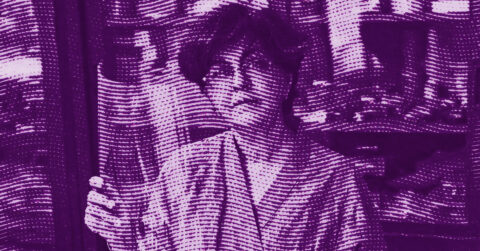Listen to me carefully, you bunch of snobs! Sarah Morris (born in 1967) is not just an artist who makes pretty colored grids to decorate your sterile living rooms. She is one of the few who has understood that geometric abstraction did not die with Mondrian, but can still speak to us about our hyper-capitalist, over-industrialized, and paradoxically disconnected world.
Look at her monumental paintings, those mathematical compositions that seem to come from a non-Euclidean geometry manual. These works are not meant to look nice in your designer interiors. They are the relentless reflection of our algorithmic society, where every decision is dictated by data matrices. Morris uses industrial alkyd paint, the kind found in any hardware store. A radical choice that echoes Walter Benjamin’s thinking on the technical reproducibility of art. She transforms this mundane material into glossy surfaces that act like distorted mirrors of our urban reality.
Her latest series “Sound Graph” and “Spiderweb” are particularly striking. These canvases seem to capture the very essence of what Gilles Deleuze called “control societies.” The lines intersect like streams of information, creating nodes of tension that evoke the nerve centers of our surveilled metropolises. The grid is no longer just a formal device inherited from modernism; it becomes a chilling metaphor for our lives segmented by algorithms.
But Morris does not limit herself to painting. She also films our cities with surgical precision that would make Dziga Vertov look like an amateur. Her films such as “Rio,” “Beijing,” or “Abu Dhabi” are not mere tourist documentaries. They are ruthless dissections of what Guy Debord called the “society of the spectacle.” She captures these metropolises in their architectural excess, capitalist hubris, and pathological desire for control.
In “Finite and Infinite Games” (2017), she takes her reflection further by drawing inspiration from James P. Carse’s theories. She shows us how contemporary architecture, embodied by the Elbe Philharmonic Hall in Hamburg, becomes the stage for a struggle between two worldviews: that of the finite game (winning at all costs) and that of the infinite game (playing to keep playing).
Her work is a slap in the face to proponents of decorative and harmless art. She uses the codes of geometric abstraction not to create decorative works but to dissect the power mechanisms that govern our societies. Her paintings and films function like X-rays of our era, revealing the invisible structures that constrain us.
Sarah Morris transforms cold data, whether architectural plans, economic statistics, or sound recordings, into visceral aesthetic experiences. She accomplishes the rare feat of making the invisible visible without falling into didacticism. Her works confront us with the reality of our machine-like cities, these megalopolises that promise paradise while locking us into gilded grids.
To all those who think contemporary art should be merely decorative, Morris responds with a radically political practice. She takes up the formal weapons of modernism, the grid, pure color, geometry, to turn them against the system that has drained them of their revolutionary substance. Her paintings are visual viruses that infiltrate the sanitized spaces of late capitalism to expose its contradictions.
The way she combines painting and cinema is particularly relevant. These two seemingly opposing media nourish each other in a fascinating dialectic. Her films document the brutal reality of our metropolises while her paintings abstract their underlying structures. This is precisely what Fredric Jameson called the “cognitive mapping” of late capitalism.
Her installation “Ataraxia” (2019) pushes this logic to its extreme. By covering the walls of an entire room with geometric patterns, she creates a mental space that evokes both multinational control rooms and padded cells of asylums. Ataraxia, that state of imperturbable calm sought by Stoic philosophers, becomes here the symptom of a society anesthetized by its own control devices.
While architecture has become nowadays the armed wing of financial capitalism, where skyscrapers are less buildings than three-dimensional graphs of real estate speculation, Morris asks essential questions: who controls space? How does the geometry of power shape our lives? Her works are vision machines that allow us to see what we did not want to see.
Make no mistake: behind the formal elegance of her compositions hides a harsh critique of our late modernity. Morris is not a decorator for multinational lobbies; she is an anatomist of contemporary capitalism. She dissects power structures with the precision of a surgeon and the contained rage of an activist.
















